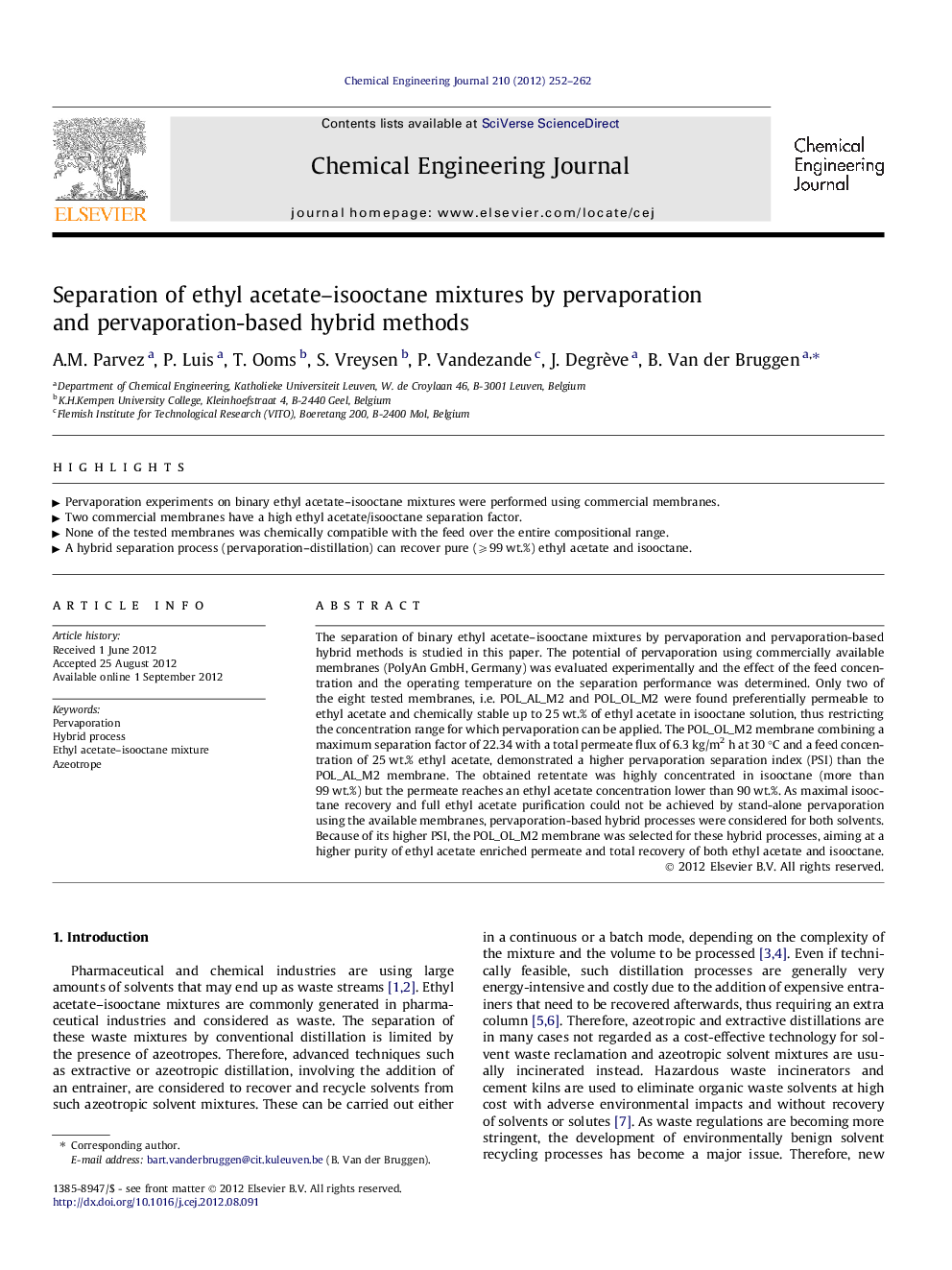| کد مقاله | کد نشریه | سال انتشار | مقاله انگلیسی | نسخه تمام متن |
|---|---|---|---|---|
| 149336 | 456431 | 2012 | 11 صفحه PDF | دانلود رایگان |

The separation of binary ethyl acetate–isooctane mixtures by pervaporation and pervaporation-based hybrid methods is studied in this paper. The potential of pervaporation using commercially available membranes (PolyAn GmbH, Germany) was evaluated experimentally and the effect of the feed concentration and the operating temperature on the separation performance was determined. Only two of the eight tested membranes, i.e. POL_AL_M2 and POL_OL_M2 were found preferentially permeable to ethyl acetate and chemically stable up to 25 wt.% of ethyl acetate in isooctane solution, thus restricting the concentration range for which pervaporation can be applied. The POL_OL_M2 membrane combining a maximum separation factor of 22.34 with a total permeate flux of 6.3 kg/m2 h at 30 °C and a feed concentration of 25 wt.% ethyl acetate, demonstrated a higher pervaporation separation index (PSI) than the POL_AL_M2 membrane. The obtained retentate was highly concentrated in isooctane (more than 99 wt.%) but the permeate reaches an ethyl acetate concentration lower than 90 wt.%. As maximal isooctane recovery and full ethyl acetate purification could not be achieved by stand-alone pervaporation using the available membranes, pervaporation-based hybrid processes were considered for both solvents. Because of its higher PSI, the POL_OL_M2 membrane was selected for these hybrid processes, aiming at a higher purity of ethyl acetate enriched permeate and total recovery of both ethyl acetate and isooctane.
► Pervaporation experiments on binary ethyl acetate–isooctane mixtures were performed using commercial membranes.
► Two commercial membranes have a high ethyl acetate/isooctane separation factor.
► None of the tested membranes was chemically compatible with the feed over the entire compositional range.
► A hybrid separation process (pervaporation–distillation) can recover pure (⩾99 wt.%) ethyl acetate and isooctane.
Journal: Chemical Engineering Journal - Volume 210, 1 November 2012, Pages 252–262